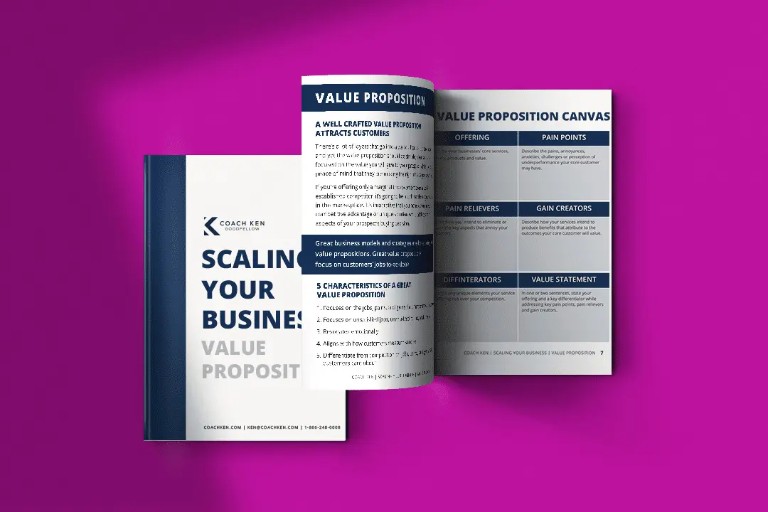
A value proposition is a promise of value to be delivered by the service you’re offering.
It should clearly state the primary reason a prospect should buy from you while addressing friction points or anxieties your prospect may have about your service.
A WELL CRAFTED VALUE PROPOSITION ATTRACTS CUSTOMERS
There’s a lot of layers that go into a well crafted value proposition and yet the value proposition should be simple, clear and laser focused on the value you will give to your prospect while providing peace of mind that they are making the right choice going with you. If you’re offering only a marginal improvement over a wellestablished competitor, it’s going to be much harder to get traction in the marketplace. It’s imperative that you hone down on your competitive advantage or unique solution while addressing all aspects of your prospect’s buying decision.
Great business models and strategies are based on great value propositions. Great value propositions focus on customers’ jobs-to-be-done.
5 CHARACTERISTICS OF A GREAT VALUE PROPOSITION
- Focuses on the jobs, pains, and gains that matter most to customers.
- Focuses on unsatisfied jobs, unresolved pains, and unrealized gains.
- Resonates emotionally.
- Aligns with how customers measure success.
- Differentiate from competition on jobs, pains, and gains that customers care about.
PAINT POINTS, PAIN RELIEVERS & GAIN CREATORS
Creating a strong and well rounded value proposition isn’t just about highlighting the value or uniqueness of your service. Your value proposition needs to address pain points, pain relievers, and gain creators. By addressing this, you will have a framework to unveil answers that will provide clarity on how you can craft your value proposition and communicate your competitive advantage.
PAINT POINTS
Pain points describe anything that annoys your customers before, during, and after trying to get a job done or risks that can potentially lead to bad outcomes. Seek to identify three types of customer pains and how severe customers find them.
- What do your prospects define too costly? Takes a lot of time, costs too much money, or requires substantial efforts?
- What makes your prospects feel bad? What are their frustrations, annoyances, or things that give them a headache?
- How are current value propositions underperforming for your prospects? Which features are they missing? Are there performance issues that annoy them or inconsistencies they cite?
- What risks do your prospects fear? Are they afraid of financial, social, or technical risks, or are they asking themselves what could go wrong?
PAIN RELIEVERS
Pain relievers outline how you intend to eliminate or reduce the key aspects that annoy your customers before, during, or after they are trying to complete a job or that prevent them from doing so. You don’t need to come up with a pain reliever for every pain you’ve identified—no value proposition can do this. However, focus only on the key pains that your service can alleviate extremely well.
- Produce savings? In terms of time, money, or efforts. Is this making your prospect feel better? By killing frustrations, annoyances, and other things that give prospects a headache.
- Fix underperforming solutions? By introducing new features, better performance, or enhanced quality.
- Put an end to difficulties and challenges your prospect encounter? By making things easier or eliminating obstacles.
- Eliminate risks your prospect fear? In terms of financial, social, technical risks, or things that could potentially go wrong.
GAIN CREATORS
Gain creators describe how your products and services create customer gains. They explicitly outline how you intend to produce outcomes and benefits that your customer expects, desires, or would be surprised by, including functionality, social gains, positive emotions, and cost savings. As with pain relievers, gain creators don’t need to address every gain identified in the customer profile. Focus on those that are relevant to customers and where your products and services can make a difference.
- Which savings would make your customers happy? Which savings in terms of time, money, and effort would they value?
- What quality levels do they expect, and what would they wish for more or less of? How do your current value propositions delight your prospects? Which specific features do they enjoy?
- What performance and quality do they expect?
- What would make your prospect’s life easier? Could you add more aspects to your service or increase the speed of deliverability of your service?
Download VALUE PROPOSITION: Scaling Your Business EBOOK.
Learn how to craft a unique, and compelling value proposition that persuades your prospects.


